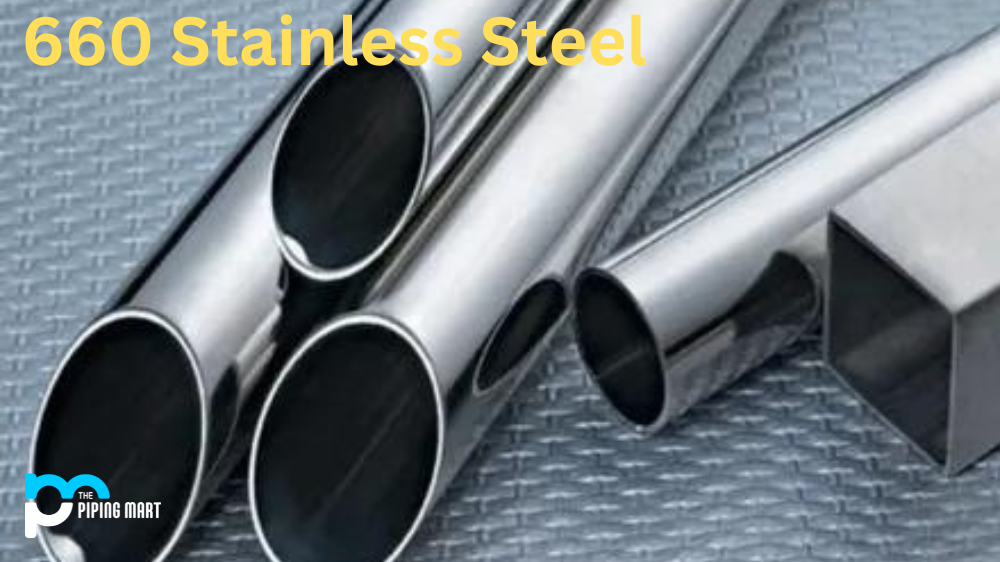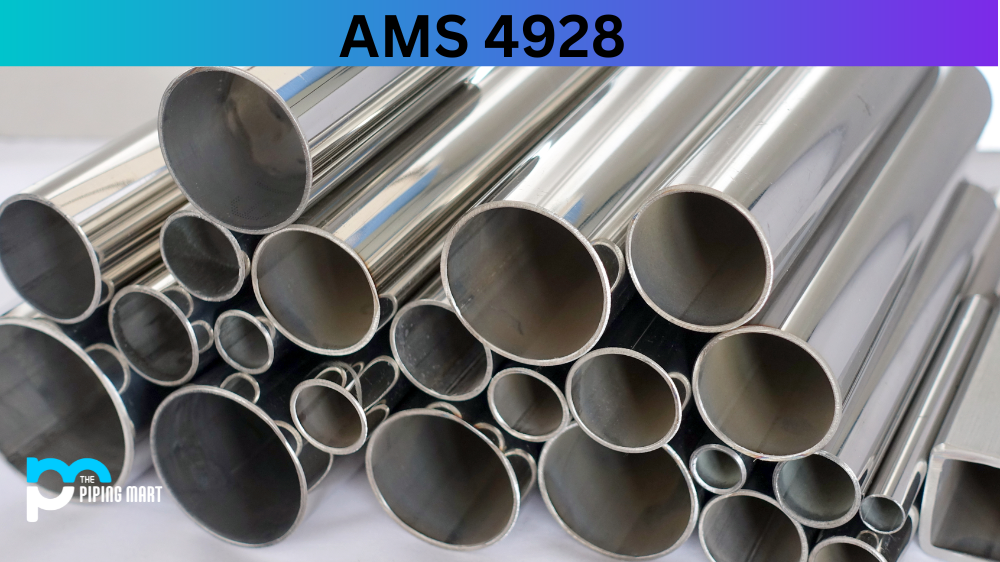Stainless steel is popular in the metal industry because of its strength, durability, and corrosion resistance. One specific type of stainless steel gaining popularity is the 660 stainless steel. It is a high-strength austenitic stainless steel, often used in manufacturing equipment for various industries, including chemical, oil and gas, and power generation. This blog post will provide a comprehensive guide about 660 stainless steel composition, mechanical properties, physical properties, uses, corrosion resistance, heat treatment, machining, and welding.
660 Stainless Steel Composition
The 660 stainless steel, or Alloy A-286, is precipitation-hardening stainless steel made of iron, nickel, and chromium. It also contains small amounts of titanium, molybdenum, vanadium, and aluminium. Combining elements in the 660 stainless steel gives it impressive strength, hardness, and corrosion resistance.
| C | Si | Mn | P | S | Cr | Ni | Mo | Ti | Al | V | B | Fe | |
|---|---|---|---|---|---|---|---|---|---|---|---|---|---|
| Min | • | • | • | • | • | 13.50 | 24.00 | 1.00 | 1.90 | • | 0.10 | • | 0.00 |
| Max | 0.08 | 1.00 | 2.00 | 0.040 | 0.030 | 16.00 | 27.00 | 1.50 | 2.35 | 0.35 | 0.50 | 0.01 | 0.00 |
660 Stainless Steel Mechanical Properties
The mechanical properties of the 660 stainless steel are exceptional, especially when it comes to high-temperature performance. It has a tensile strength of up to 160 ksi and a yield strength of up to 140 ksi. The alloy maintains its strength at high temperatures up to 1300°F (704°C), making it suitable for use in industries that require high-temperature resistance.
| U.T.S | 130 KSI Min | (895 N/mm2) |
|---|---|---|
| 0.2% Proof Stress | 85 KSI Min | (585 N/mm2) |
| Elongation | 15 % | |
| Red of Area | 18 % | |
| CVN Impacts @ -60°C (-75°F) | 57 Joules | (42 ft-lbf) |
660 Stainless Steel Physical Properties
The 660 stainless steel is a non-magnetic alloy that exhibits good toughness. Its density is 7.93 g/cm³, with a melting point of around 1400°C. The alloy has a low thermal expansion coefficient, making it ideal for applications requiring dimensional stability.
660 Stainless Steel Uses
The 660 stainless steel is popular in manufacturing equipment for various industries, including chemical processing, oil and gas, power generation, and aerospace. Its high-temperature resistance makes it suitable for use in aircraft and jet engines. The alloy also produces fasteners, springs, and non-magnetic cryogenic equipment.
660 Stainless Steel Corrosion Resistance
The 660 stainless steel is known for its excellent corrosion resistance against many chemicals, seawater, and environmental conditions. It is highly resistant to pitting, crevice, and stress corrosion cracking. The alloy’s corrosion resistance can be further enhanced through passivation or electropolishing.
660 Stainless Steel Heat Treatment
The 660 stainless steel is precipitation-hardened through heat treatment. The alloy is usually solution annealed at 1650°F (900°C) for one hour and then air-cooled. Afterwards, the alloy is reheated to 1300°F (704°C) for one hour and then cooled at a controlled rate. This heat treatment enhances the alloy’s mechanical properties.
660 Stainless Steel Machining
The 660 stainless steel is difficult to machine due to its hardness and toughness. It is recommended to use carbide tooling or high-speed steel to cut through the alloy. Cooling the cutting tools to prevent possible damage to them is also necessary. Moreover, using coolant during machining is essential to enhance the quality of the machined parts.
660 Stainless Steel Welding
The 660 stainless steel is readily weldable using conventional welding techniques, including gas tungsten arc welding (GTAW) and gas metal arc welding (GMAW). The use of low heat input is recommended to prevent cracking and distortion. It is also necessary to use filler metals with high nickel content to maintain the alloy’s properties after welding.
Conclusion
The 660 stainless steel is a high-strength austenitic stainless steel with excellent mechanical properties, physical properties, and corrosion resistance. Its exceptionally high-temperature and chemical resistance make it ideal for various industries, including chemical processing, oil and gas, power generation, and aerospace. Proper heat treatment, machining, and welding techniques are essential to maintain the alloy’s properties. Overall, the 660 stainless steel is a top-quality material that can deliver high performance in various applications.





